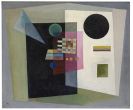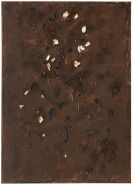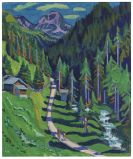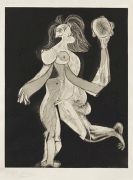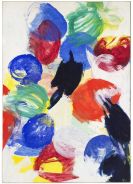
Alvar Aalto
Kuortane
1898 -
Helsinki
1976
Alvar Aalto, whose full name was Hugo Alvar Hendrik Aalto, was not only the most important Finnish architect of the 20th century but also a leading modern furniture designer. His chair "Paimio" (1931), with bentwood elements and his curvilinear vase "Savoy" (1936) have become major design icons that have laid the cornerstone for organic design. Alvar Aalto studied architecture under Armas Lindgren at the Helsinki Technical Institute from 1916 to 1921. He then worked as an exhibition designer, traveling throughout Europe and thus acquiring a vast knowledge of contemporary trends in architecture and art.
In 1923 Alvar Aalto opened his own architectural studio in Jyväskyla. In 1924 he married Aino Marsio (1894-1949), who collaborated with him as a designer in his studio from 1925. In 1927 the practice moved to Turku and then to Helsinki in 1933.
In 1928 Alvar Aalto became a member of the "Congrès International d'Architecture Moderne" (CIAM), a series of architecture conferences convened between 1928 and 1959, which provided a major source of thematic inspiration for various approaches related to urban planning and architecture as living space. Le Corbusier was the main mover and shaker here.
From 1943 to 1958 Alvar Aalto was head of the Finnish Architects' Association SAFA, from 1946 to 1948 he was a professor of architecture at the Massachusetts Institute of Technology in Cambridge, Massachussetts. After the death of his wife Aino, Aalto married the architect Elsa (Elissa) Mäkiniemi in 1952. From the outset Alvar Aalto was not just an architect; designing objects and furniture played an important role in his practice.
Two of his most important early buildings are the municipal library in Viipuri (1927-35) and the tuberculosis sanatorium in Paimio (1928-33), where he also designed the entire interior and furniture and its furnishings. Together with Aino, Alvar Aalto experimented with bending plywood and laminated wood for furniture from 1925. From 1929 Aalto continued to experiment in collaboration with Otto Korhonen, technical director of a furniture factory near Turku. In the 1930s he produced revolutionary chair designs with curvilinear forms, including "Paimio" (1931) and in 1933 the "L-leg" stackable chair with L-shaped legs. In 1935 Alvar Aalto, his wife Aino and friends founded the Artek company to ensure international marketing and distribution of his furniture and other designs. The L-leg chair was followed by the "Y-Leg" (1946-1947) and the "Fan-Leg" (1954).
In 1936 the Aalto practice designed the entire interior of the Savoy, a luxury restaurant in Helsinki, and with it the glass vase of the same name. From 1938 he produced the "tea trolley" with large wheels. By 1936 Alvar Aalto was showing vases and tableware at the design competitions launched by Iittala, through which objects of Finnish designs were chosen to be shown at the 1937 Paris Exposition.
Alvar Aalto also designed the Finnish Pavilions for the 1937 Paris Exposition and the 1939 New York World's Fair. In 1938 the Museum of Modern Art in New York mounted the first large-scale retrospective of Alvar Aalto's work, followed by others in 1984 and 1998. Starting with the influence of the Arts and Craft and the International Modern movements with overtones of Finnish National Romanticism with its preference for natural materials, Alvar Aalto arrived in both his buildings and his furnishings at an interpretation of functionalism that was distinctively his own.
Concerned with "humanizing architecture" (Aalto), he rejected artificial materials such as steel tubing for his furniutre. Wood was for him a "form-inspring, profoundly human material". Alvar Aalto's organic formal language inspired many designers after him.
Would you like to sell a work by Alvar Aalto?
Infos for seller

